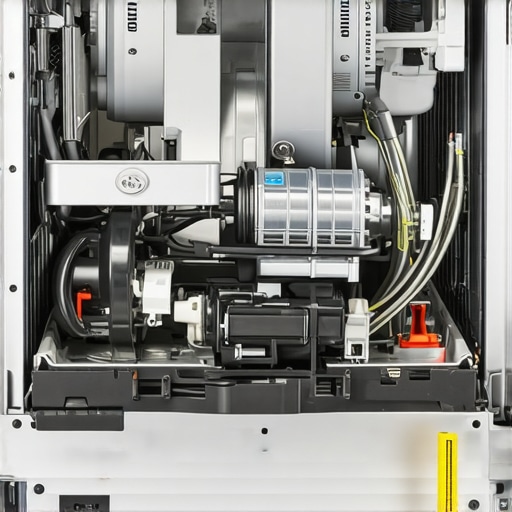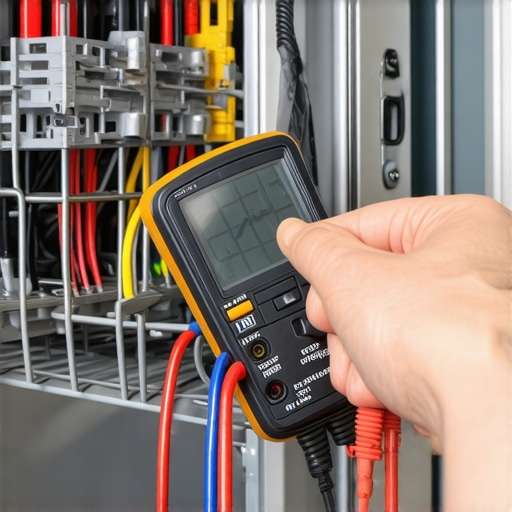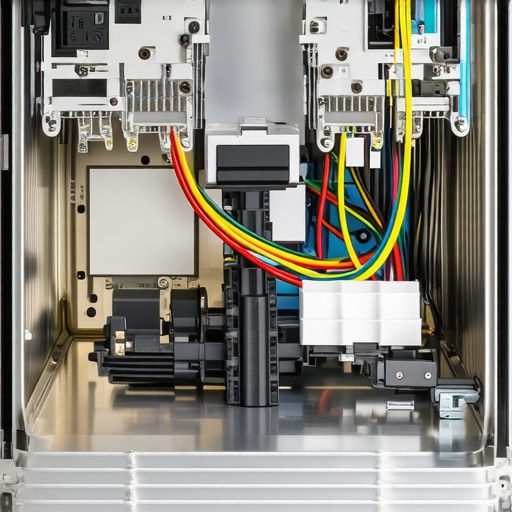My Unexpected Dishwasher Breakdown: A Wake-Up Call for Warranty Awareness
It was a hectic Saturday morning when I opened my dishwasher, only to find a puddle of water and a strange noise. Initially, I panicked, thinking I’d need a costly repair. But then I remembered my warranty coverage and decided to troubleshoot before calling in a professional. That experience taught me the importance of understanding my appliance’s warranty and doing some basic troubleshooting myself.
Understanding Your Dishwasher’s Common Problems and How Warranty Can Save You
From clogged filters to faulty pumps, dishwashers can develop a range of issues. When I faced my first problem, I started by checking the simple things—like the door latch and the filters. Having a good grasp of what’s covered under warranty can really save time and money. Sometimes, manufacturers offer free repairs or replacements for certain parts within the warranty period, which makes troubleshooting even more worthwhile.
My Personal Approach to Troubleshooting: Step-by-Step
I always begin with the basics: ensuring the power supply is stable, the door is sealed properly, and the filters are clean. If the problem persists, I consult the user manual, which often includes troubleshooting tips. I also turn to online resources, like trusted appliance repair sites, for guidance. Remember, a lot of common dishwasher issues are easy to fix if you know what to look for. For instance, a clogged drain hose can cause water to pool, but it’s usually a simple fix.
What’s the Role of a Warranty in Troubleshooting? Is DIY Enough?
Having a warranty doesn’t mean I should ignore professional help, but it does give me confidence to try fixing minor problems myself. I always check if the issue qualifies for warranty repairs—sometimes, the manufacturer’s website or customer service can clarify this. For more complex problems, I prefer to contact a certified technician to avoid voiding the warranty. This balance helps me maximize my warranty benefits while avoiding unnecessary expenses.
How Can I Tell If My Dishwasher Problem Is Covered by Warranty?
Great question! Usually, warranty coverage depends on the issue type and the warranty terms. I recommend reviewing your warranty details carefully—most manufacturers specify what is and isn’t covered. For instance, parts like the motor or control board might be covered, but damage caused by misuse isn’t. When in doubt, I reach out directly to the manufacturer or visit their official website for guidance.
If you’re interested in more tips on appliance diagnostics, check out this useful guide.
Finally, I encourage you to share your own experiences or ask questions in the comments. Troubleshooting can be intimidating at first, but with the right knowledge, you can often resolve issues quickly and keep your warranty intact.
Going Beyond Basics: How Deeply Do You Understand Your Dishwasher’s Warranty?
While many homeowners are aware that warranties cover certain repairs, few delve into the specifics that can empower them during appliance crises. As an expert, I recommend thoroughly reviewing your warranty documentation, paying close attention to the fine print. For example, knowing whether the warranty covers only parts or also labor can significantly influence your decision to attempt a repair yourself or call a professional. Additionally, understanding the duration of coverage and any exclusions, such as damage from misuse or neglect, helps prevent costly missteps.
The Nuanced Role of Diagnostic Tools in DIY Dishwasher Repairs
Modern dishwashers often come equipped with diagnostic modes or error codes that, when interpreted properly, can pinpoint the exact problem. Many manufacturers provide online resources or smartphone apps to help decode these signals. For instance, an error code indicating a faulty sensor might be easily fixable if you’re familiar with basic electrical troubleshooting. Using a multimeter to test components or inspecting wiring harnesses can reveal issues that are simple to resolve, saving both time and money. For in-depth guidance, referring to trusted resources like this expert diagnostic guide can enhance your troubleshooting accuracy.
Creative Questions from an Appliance Expert: Is Your Dishwasher’s Problem a Sign of an Underlying Issue?
When a dishwasher malfunctions, it’s tempting to see it as a one-off problem. However, as an appliance technician, I often ask: Could this be an early warning sign of a more significant issue? For example, persistent leaks might indicate worn-out door seals or misaligned components that, if left unaddressed, could lead to more extensive water damage or motor failure. Similarly, recurring error codes or inconsistent washing results might reveal underlying issues like clogged filters or failing control boards. Recognizing these patterns allows homeowners to intervene proactively, preventing costly repairs down the line.
How Can You Leverage Warranty Benefits to Prevent Future Problems?
One of the most effective strategies is to maintain a detailed record of your appliance’s service history and warranty coverage. When a problem arises, check if it qualifies for warranty repair, and don’t hesitate to contact the manufacturer’s customer service for clarification. Regular maintenance, such as cleaning filters and inspecting hoses, can also extend your dishwasher’s lifespan and keep warranty conditions intact. Remember, many warranties are voided if repairs are attempted improperly or if unauthorized parts are used, so always verify whether a DIY fix might affect your coverage.
Would a Professional Inspection Save You Money in the Long Run?
While DIY troubleshooting can be empowering, sometimes a professional assessment is more cost-effective. Certified technicians have access to specialized diagnostic tools and extensive training to identify hidden issues that might not be apparent through simple checks. For example, a professional might detect subtle motor or control board problems that could escalate if ignored. If your warranty covers repairs, engaging an authorized technician ensures you stay within warranty guidelines and avoid voiding coverage. For complex problems or persistent errors, consulting an expert can be a smart investment.

Considering the complexity of modern dishwasher components, a detailed visual guide can be invaluable. An image showing common internal parts or diagnostic tools would help homeowners better understand the repair process and identify issues more confidently. For comprehensive troubleshooting tips, visit this trusted resource.
Unraveling the Hidden Layers of Dishwasher Warranties: What You Might Overlook
Over the years, my experience with dishwashers has revealed that warranty documents often contain subtle details that can make or break your repair strategy. For instance, I once discovered that some warranties explicitly exclude damages caused by improper installation—something that’s easy to overlook when you’re eager to fix a leak or a malfunction. Diving into these fine print nuances can empower homeowners to make smarter decisions, ensuring they don’t inadvertently void their coverage. It’s not just about knowing what’s covered, but understanding the conditions and limitations that come with it.
The Role of Diagnostic Tools: Beyond Basic Troubleshooting
Modern dishwashers are increasingly equipped with diagnostic modes that serve as powerful allies in troubleshooting. I’ve found that interpreting these error codes correctly can save hours of guesswork. For example, a flashing light or a specific error code might point directly to a faulty sensor or a clogged drain pump. Using multimeters or specialized diagnostic tools, I can often pinpoint electrical issues with precision. As I explored in this comprehensive guide, understanding these signals transforms a frustrating repair into a manageable task, often within warranty guidelines.
Deep Reflection: Is Your Dishwasher Signaling a Larger Problem?
When I encounter recurring issues, I always ask myself: Could this be an early warning sign of a more serious underlying problem? Take persistent leaks, for example. Initially, I’d think of worn door seals, but deeper inspection often reveals misaligned spray arms or deteriorating hoses. These seemingly minor issues, if ignored, can escalate into costly repairs or even total dishwasher failure. Recognizing the subtle clues—like inconsistent wash cycles or unusual noises—can lead to proactive repairs that extend the appliance’s lifespan and protect your warranty coverage. It’s a lesson in paying close attention to patterns and not dismissing anomalies as isolated incidents.
Engaging with the Community: Share Your Experiences and Learn from Others
Throughout my journey, I’ve learned that sharing stories and insights with fellow homeowners can be incredibly enriching. Whether it’s a tricky repair or a tip about warranty pitfalls, community feedback often uncovers solutions that aren’t found in manuals. I encourage you to leave comments or ask questions—your experiences might help someone else avoid a costly mistake. Plus, engaging actively keeps you informed about the latest troubleshooting techniques and warranty updates. For those interested, exploring detailed diagnostics at this trusted resource can deepen your understanding and boost your confidence in handling future repairs.
Final Thoughts: Balancing DIY Repairs with Professional Help
While my passion for DIY troubleshooting grows stronger with each successful repair, I’ve also come to appreciate the value of professional assessments. Sometimes, a technician’s expertise uncovers issues that are hidden beneath the surface—like subtle electrical faults or control board failures—that I might miss. Especially when dealing with warranty-covered repairs, consulting authorized professionals ensures that I don’t inadvertently void my coverage. It’s about finding that sweet spot between self-reliance and expert assistance, ensuring longevity for your appliance and peace of mind for yourself.

Deciphering the Hidden Language of Diagnostic Codes and Their Implications
Modern dishwashers are increasingly sophisticated, equipped with diagnostic modes that communicate issues through specific error codes. As an enthusiast committed to mastering appliance repair, I’ve learned that understanding these codes can drastically reduce repair times and prevent unnecessary expenses. For instance, an error like E15 often indicates a drainage problem, which can be resolved by inspecting and clearing the drain hose and filter. Interpreting these signals correctly requires familiarity with your appliance’s manual or trusted online resources. When I encountered a persistent error code, I utilized manufacturer-specific diagnostic guides available on official websites, which provided step-by-step troubleshooting procedures. This approach not only saved me money but also deepened my appreciation for appliance design complexity. For a comprehensive understanding, I recommend exploring this expert diagnostic guide.
Could Your Dishwasher’s Symptoms Be a Symptom of a Deeper Mechanical or Electrical Issue?
When a dishwasher exhibits recurring problems—such as inconsistent wash quality, unusual noises, or persistent leaks—it’s wise to consider the possibility of underlying issues. In my experience, seemingly minor issues often signal deeper mechanical or electrical failures. For example, a dishwasher that fails to drain properly might appear to be a simple clog, but it could also point to a faulty circulation pump or a worn-out motor. Similarly, intermittent operation may be caused by failing control boards or corroded wiring connections. Recognizing these early warning signs requires a keen eye and an understanding of appliance mechanics. Consulting detailed diagnostic procedures, like those found at this trusted resource, can help homeowners identify whether a problem warrants professional attention or if it can be safely addressed through targeted DIY fixes. This proactive approach preserves warranty coverage and extends the lifespan of your appliance.
How Can I Leverage Warranty Coverage to Address Complex or Recurrent Issues?
Understanding the nuances of your dishwasher’s warranty can empower you to make informed decisions when troubleshooting or seeking repairs. For instance, some warranties cover parts but exclude labor, meaning DIY replacements may be feasible without voiding coverage, provided you follow manufacturer guidelines. Conversely, attempting complex repairs without proper authorization might inadvertently void your warranty. I always review my warranty terms thoroughly, paying close attention to exclusions related to misuse or unauthorized repairs. Engaging with authorized service providers ensures that warranty conditions are met, especially when dealing with recurrent or concealed issues. Regular maintenance—like cleaning spray arms and inspecting hoses—not only keeps the appliance running smoothly but also safeguards warranty validity. To deepen your understanding of warranty intricacies, I recommend exploring this detailed resource.
Can Professional Diagnostics Uncover Hidden Faults Beyond My Reach?
While DIY troubleshooting is rewarding, there are situations where professional diagnostics are invaluable. Certified technicians have access to advanced tools—such as circuit testers, thermal imaging, and specialized diagnostic software—that can detect subtle faults invisible to the untrained eye. For example, a technician might identify a failing control module or a microcrack in electrical wiring that causes intermittent failures. In my experience, investing in a professional assessment often uncovers underlying issues that, if left unaddressed, can lead to costly repairs or warranty voidance. When considering whether to call a professional, weigh the potential cost savings against the risk of overlooking complex faults. For complex, warranty-covered repairs, engaging an authorized technician guarantees adherence to warranty guidelines and reduces the chance of voiding coverage. To explore more about professional diagnostics, visit this authoritative guide.
< >
>
Visual aids can significantly enhance your troubleshooting success. An image illustrating internal components like the control board, sensors, and wiring harnesses can demystify the repair process and aid in identifying issues swiftly. Consider consulting detailed diagrams or photos available on reputable repair sites to familiarize yourself with your specific model’s layout. For a comprehensive visual guide, see this trusted resource.
Are You Listening to Your Dishwasher’s Signals as Early Warnings?
In my practice, persistent leaks, strange noises, or error alerts are often early indicators of more significant underlying problems. For example, recurring leaks might suggest deteriorating door seals, misaligned spray arms, or corroded hoses—issues that could escalate into water damage or motor burnout if ignored. Similarly, abnormal noises might be caused by loose components or worn bearings. Recognizing these patterns early enables targeted intervention, which can prevent extensive repairs and protect your warranty coverage. Paying close attention to these subtle clues and consulting detailed diagnostic resources can help you determine whether a professional assessment is warranted. This proactive approach saves money and prolongs appliance life, turning minor nuisances into opportunities for preventive maintenance.
Share Your Journey and Learn from Fellow Enthusiasts
Throughout my appliance repair adventures, engaging with a community of homeowners and repair enthusiasts has been incredibly enriching. Sharing experiences about troubleshooting, warranty pitfalls, and successful fixes often uncovers nuanced insights that manuals might overlook. I encourage you to contribute your stories, ask questions, and exchange tips—collective knowledge accelerates learning and enhances confidence. Moreover, participating in discussions keeps you updated on the latest diagnostic techniques and warranty updates. For those eager to deepen their expertise, exploring advanced diagnostics at this trusted resource can be a game-changer.
Things I Wish I Knew Earlier (or You Might Find Surprising)
The Fine Print Matters
I used to overlook the details in my dishwasher’s warranty, thinking as long as it was covered, I was safe. Turns out, reading the fine print can reveal exclusions that catch you off guard—like damage from misuse or improper installation. Once I realized this, I always double-check my warranty terms before attempting repairs, saving myself time and avoiding voided coverage.
DIY Isn’t Always a Shortcut
When I first started troubleshooting, I believed that fixing simple problems myself was always better. But I learned that some issues, especially complex electrical faults, are best left to professionals. Knowing when to call in an expert not only protects my warranty but also prevents accidental damage that could cost more later.
Diagnostic Codes Are Your Friends
Modern dishwashers communicate problems through error codes, which can seem confusing at first. I found that understanding these codes, by consulting the manual or trusted online resources, makes troubleshooting more efficient. It’s like having a map that guides you straight to the problem instead of wandering aimlessly.
Recognizing Patterns Saves Money
Persistent leaks or recurring error messages often signal deeper issues. I’ve learned to pay attention to these signs early, like worn door seals or failing sensors, rather than dismissing them as minor glitches. Addressing these early can prevent costly repairs and keep my warranty intact.
The Power of Maintenance
Regular upkeep—cleaning filters, inspecting hoses—goes a long way in preventing problems. I now see maintenance as an investment in my appliance’s longevity and warranty health, rather than just a chore. Simple routines can help catch issues before they escalate.
Resources I’ve Come to Trust Over Time
- Manufacturer’s Official Website: Provides accurate troubleshooting guides and error code explanations directly from the source. I’ve found their resources reliable and up-to-date.
- Trusted Appliance Repair Sites: Such as this guide. It offers in-depth diagnostic tips that have helped me fix issues efficiently.
- Online Forums and Communities: Places like Appliance Repair Forums are invaluable for real-world advice and shared experiences from fellow homeowners.
- User Manuals: Always keep your appliance’s manual handy. It’s surprising how often the simple troubleshooting steps inside can resolve common problems.
Parting Thoughts from My Perspective
Dealing with dishwasher issues has taught me that understanding your warranty, using diagnostic tools wisely, and knowing when to seek professional help can save a lot of hassle and money. DIY troubleshooting is rewarding, but it’s essential to recognize your limits and protect your warranty coverage. Regular maintenance and being attentive to signs of deeper problems keep my appliance running smoothly and help me avoid costly repairs down the line. If this resonates with you, I’d love to hear your thoughts or tips—sharing our experiences can make all of us better at managing our appliances. Feel free to leave a comment or share this post with someone who might find it helpful.

